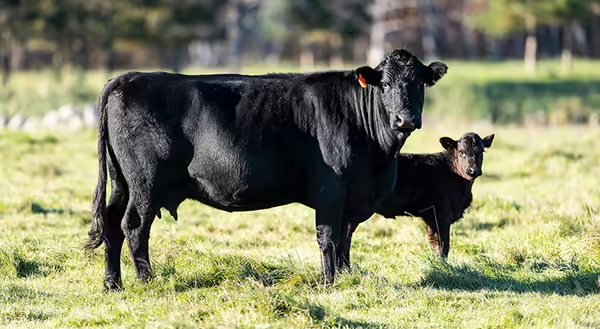
There are many reasons to maintain strict breeding windows and shorter calving windows. A tight 60-day calving window can aid in programming cow nutrition, concentrate labor, and certainly create a more uniform, marketable calf crop. If you have a spread-out calving season, consider breaking cows into a spring and fall group. However, be cautious that just shifting cows from spring to fall and vice-versa will result in little herd improvement. Break them apart to allow management and then sort off the cows that can’t hang.
Research has shown that getting a higher percentage of cows to calve within the first 21 days of the calving season results in heavier weaning weights and increased pregnancy rates compared to later calving cows. Heavier calves and more bred cows have been and will be a pretty good combination for making money. Later calving cows are more apt to fall out of your calving season and can ultimately cost you several dollars in replacement costs.
Just one missed cycle can add several dollars to the annual cost to keep a cow. It can also result in loss from weaning weight that could have been realized if the calf was older, on the ground, and growing sooner.
Researchers from University of Nebraska-Lincoln (Funston et al.) investigated the effect of calving period on heifer progeny. Results show that heifers of cows calving in the first 21 days of the calving season have lower birth weights, heavier weaning weights, and higher pregnancy rates as bred heifers when compared to heifers born to cows calving later in the calving season. They also were more apt to calve in the first 21 days of the calving season as they entered production, had lighter calves at birth that weaned off heavier, and bred back with numerically higher pregnancy rates as first-calf cows.
There is a positive snowball effect from focusing on front-loading your calving season and selecting replacements from cows that are calving early in your season. Whereas I don't encourage pulling bulls after a 60-day breeding season, because of the premium for bred cows, I do encourage utilizing a pregnancy check to identify late-bred cows and then market them before the calving season as bred cows.
Just because they don’t fit for your operation doesn’t mean they don’t fit for someone else’s. The key is to identify the cows that annually are at the front of your calving season. Select and propagate those genetics to make cows.
Tips for Getting Cows to Breed Early in the Season
- Select replacements from cows that calve early in the season.
- Have cows in correct Body Condition Score, ideally a 6.
- Avoid decreasing plane of nutrition at breeding, cows losing weight do not breed up well.
- Invest in a good mineral program, and consider injectable mineral products 30 days prior to breeding if mineral status may be compromised.
- Consider synchronization and timed-AI to front-load the calving season.
- Transition cows to lush spring forage with a dry, low-protein supplement.
- Move pre-breeding vaccines to at least 30 days prior to breeding.
- Limit stress. Use low-stress animal handling when processing cows.
- Avoid transporting of cows between 4-45 days post-breeding.
- Provide adequate shade in breeding pastures.
- Conduct a breeding soundness exam on all bulls prior to turnout.
*Originally published in the IL Beef magazine*